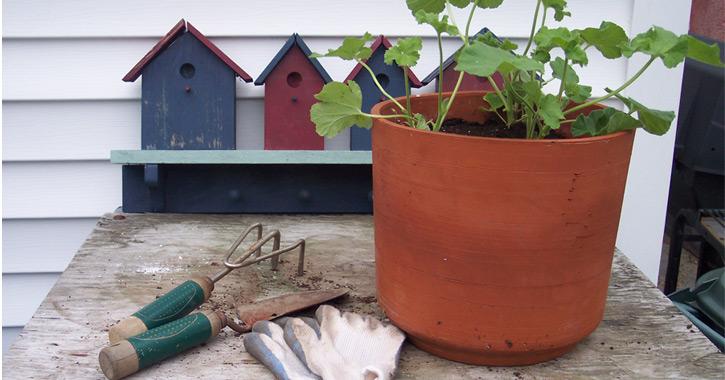Spring Clean-up Guide for your Garden
It’s March the 6th in Montreal and the forecast is calling for a daytime high of 9 degrees C and lots of sunshine. The pavement is dry as a bone and the snow banks are making a valiant effort to retain their birth but it looks like they’re losing their battle (YES!). What a difference a year (make that two years) makes. At that time, we were making our way to beautiful Chateau Montebello, in between major snowstorms. We returned a few days later on perilously icy roads to a leaky roof (due to the weight of the snow) and roofs collapsing all over the region. Not a snow rake was to be found!
Now I sit writing this with thoughts of crocus, snow-drops and hellebores dancing in my head. It just may be time to chuck the shovels and get out the rakes. This reminds me that the other side of our beautiful country is well into the springtime bliss that is lapping at our heels. So, with that in mind, do some stretches and head out into your little piece of paradise. (And keep a bar of Nori-Plus – the perfect gardener’s soap – for clean-up afterwards!)
Here are a few useful tips to get your started!
1) Get out all the equipment you will need – rakes, gloves, pruning shears and wheelbarrow. Make sure you are dressed comfortably and have sun protection – we can burn very easily the first time out. If you didn’t clean and oil your tools in the fall, this may be a good time to do it.
2) Clean up debris and broken branches. Tidy up and cut down the dead foliage from your perennials. An experienced gardener will know what to cut and how much to prune, but for the novice, this can be a daunting experience. See below for a guideline (including roses!).
3) After you have tidied things up, spread and work in a good layer of composted material (preferably organic). While you do this, remove any weeds that have over wintered in the garden. Then spread at least 2-3 inches of mulch (I use inexpensive natural, cedar mulch). This will keep future weeds out and help retain moisture over the hot summer months.
4) Spring is the time to divide late summer or fall flowering perennials that have grown too large and are not performing well. Again, this can be confusing for the novice so this website will simplify the whole task for you. Just remember that if you move or divide a perennial later in the season when it's big and bushy, always cut back the foliage by at least half to prevent serious wilting. This helps to keep the leaf mass in proportion to the reduced number of roots.
5) If you aren’t already composting, get yourself a bin (or build a holding area in a corner of your yard)! Composting bins are often available from your local community center at a greatly reduced price. Stayed tuned for an upcoming article on composting coming in a few weeks.
6) Rake your lawn but remember to hold off this chore until it is completely dry otherwise you can do some serious damage. Seed any bare or dead patches now as grass seed grows well in the cooler months of April and May as well as early autumn.
7) Plant trees and new shrubs now as they can withstand the cooler temperatures and will get a head start on the growing season.
8) Shape and prune your shrubs and hedges. Again timing and technique are essential so please check here for a detailed guide with some valuable listings of which shrubs to cut when.
9) Get your pots and flowerboxes out of storage. If you left them outside for the winter, soil intact, remember to remove all or at least 2/3 of the old soil. Most of the nutrients have been depleted and your new plants will not perform well.
10) Now its time to plan and dream. Wander around your garden and note what needs renewing and freshening-up and soak in all the wonders of Spring!
Pruning Perennials and Roses
Evergreen perennials, including many alpines will require no cutting back or only a minimal amount of tidying up. If by April, the plant looks green and healthy still, then leave it alone. If just a few leaves are a little brown or tattered-looking, just give them a little snipping. Some examples of these perennials are: Wall Cress (Arabis), Rock Cress (Aubrieta), Basket-of-Gold (Aurinia), Pinks (Dianthus), Candytuft (Iberis), Moss Phlox (Phlox subulata).
Semi-evergreen perennials sometimes stay completely evergreen in mild winter regions but for many of us they may look so beat up by spring that some of the more tattered leaves need to be removed. Among these are: Bergenia, Coral Bells (Heuchera), Foamy Bells (Heucherella), Foam Flower (Tiarella, Japanese Sedge (Carex), and various ferns. The tall, upright flower stems of Shasta Daisies (Leucanthemum), Coreopsis and Rudbeckia die back in late fall, but these plants keep low ground-hugging rosettes of evergreen leaves that become especially obvious in early spring. Remove the dead upright tops first, then see what the bottom leaves look like. These too may be trimmed a little if they look untidy, removing dead tips with scissors or shears. It's picky work, so if you just ignore them for a bit the new spring growth will quickly freshen up their appearance.
Woody Perennials are better left alone until well into mid-spring before pruning them back. Generally about 6 inches of woody stem is left at the base for the new buds to appear from. Accidentally cutting them right back to the ground will sometimes cause these plants to die. Some examples of woody perennials: Artemisia 'Huntingdon' and 'Powis Castle', Butterfly Bush (Buddleia), Blue-beard (Caryopteris), Shrubby Wallflower, (Erysimum 'Bowles' Mauve'), Fuchsia, St. John's-wort (Hypericum), Lavender (Lavandula), Tree Mallow (Lavatera), Russian Sage (Perovskia), Cape Fuchsia (Phygelius), Lavender Cotton (Santolina).
True herbaceous perennials are those that die completely back to the ground in winter. Fortunately, this includes the vast majority of common garden perennials. With these, it's an easy decision — cut everything right back to ground level. A few examples: Peonies, Daylilies, Summer Phlox, Solomon's Seal and Hosta.
Roses
Not all types of roses need to be pruned, other than for clean-up and size control, but if you are going to prune your roses, early spring is the perfect time. Pruning before the leaf buds open causes the rose bush to put its full energy into new growth. If you are uncertain how to prune roses or which roses need pruning, you’ll find the basics of pruning roses in the websites listed below. I tried to find ones with illustrations, which is always a big help. The last one includes a video showing the radical pruning of an old bush, which will encourage those of you who are feeling reluctant to do anything drastic. Good luck!



Commentaires
Moss replied on Permalien
For garden sprucing do you recommend getting moss removed from your garden paths? I have brick garden paths covered in moss but I think it looks pretty. My husband wants to hire this company to remove it but I think it's an unnecessary cost. https://www.nanaimomossremoval.com/ I wanted your expert opinion thank you! I asked a few others, just waiting for responses so no worries of you don't have time to reply. Thanks for the great article anyways!